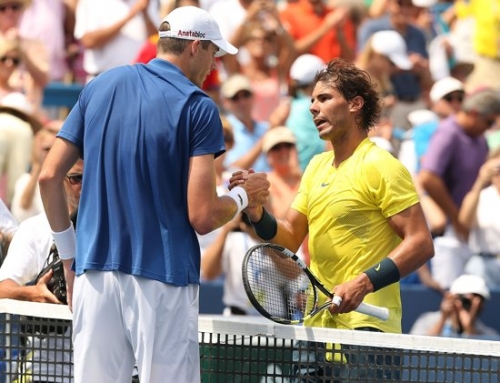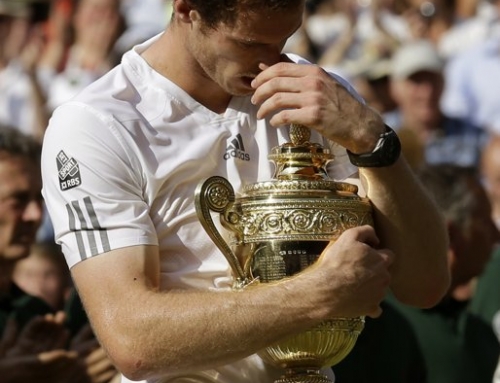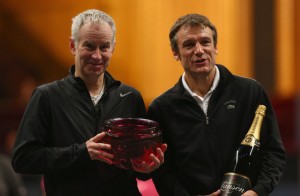 Perhaps, on the conclusion of the US doubles match in the first round Davis Cup tie between US and Brazil, a match that made it to 7 hours and involved a rare feat, a defeat of the Bryan brothers, by the veteran duo of Melo and Soares. The Brazilian duo lack the credentials of the most decorated doubles team ever. Indeed, they’ve never won a Slam nor been in a Slam final. They’re a bit like David Ferrer, or someone of that ilk. Always the bridesmaid, never the bride. The duo claimed it was their best victory ever. To the average outsider, who probably didn’t pay attention to the match, the result was not even something that registered on the brain.
Perhaps, on the conclusion of the US doubles match in the first round Davis Cup tie between US and Brazil, a match that made it to 7 hours and involved a rare feat, a defeat of the Bryan brothers, by the veteran duo of Melo and Soares. The Brazilian duo lack the credentials of the most decorated doubles team ever. Indeed, they’ve never won a Slam nor been in a Slam final. They’re a bit like David Ferrer, or someone of that ilk. Always the bridesmaid, never the bride. The duo claimed it was their best victory ever. To the average outsider, who probably didn’t pay attention to the match, the result was not even something that registered on the brain.
Perhaps the event should be analogous to World Cup soccer where fans watch as many matches, especially of their home country, with heightened anticipation, or perhaps even to American football, college or pro, where whole weekends are spent watching one game after the next, or March madness with so many games played in the first week of competition. The reality is, without good TV coverage, and without good fan awareness, this isn’t happening. Many are more concerned with the Super Bowl which has been discussed ad nauseum. Davis Cup is a distant memory, especially in the first round. Sports news, in particular American sports news, is only interested in tennis when tennis misbehaves. We’d rather hear about Serena’s tantrum than the match that she had the tantrum in.
It’s true. Davis Cup no longer attracts the best of the best. And, it’s true, smaller countries love the occasional upset even realizing they aren’t playing the best of the best (although, in this case, the Brazilian duo is playing the number 1 men’s doubles team).
This record breaking match broke a record that has stood for nearly 30 years and was also a US Davis Cup tie. It was held back in St. Louis on July 11, 1982. It was the fifth rubber (these days, the top two singles players usually play the fourth rubber), and at 6 hours 22 minutes, it became the longest Davis Cup match ever, although McEnroe nearly equaled it in a match against Boris Becker.
In those days, the standard Davis Cup rules applied, which were no tiebreak sets in any set. Those rules eventually changed so tiebreaks were played in the first four sets, but not in the fifth.
John McEnroe, who was the top player of the day, recalled that he promised his parents he would get a college degree and play Davis Cup. He didn’t finish college, only completing a year at Stanford, before devoting himself to the pro circuit, so he said he had to play Davis Cup, and was always devoted to the format. Contrast this with Jimmy Connors who played Davis Cup sparingly. Team events weren’t his cup of tea. He preferred to play for himself. Borg also didn’t play Davis Cup much. He helped Sweden win a title, but then didn’t play much.
In those days, accumulations of Slams was not a priority for most players. Most players had a favorite Slam, perhaps two, and focused their energy on winning that. Jimmy Connors loved the US Open and won it 5 times, but only won two Wimbledons and one Australian Open as his other Slams. Few of the top pros ventured to the Australian Open which had become a forgotten Slam as the Aussies, once the powerhouse of the tennis circuit, were fading with no great players in the late 1970s.
Mats Wilander was also an intriguing figure. Bjorn Borg had decided his long, protracted style which involved long drawn-out points, and basically boring his opponent to death, was too much even for him. Behind the steely cold gaze of the Iceman Borg was a man who had lost motivation. Despite winning the French for a 6th time, and reaching both the Wimbledon and US Open final once again, in late 1981, Borg said he would take a break, termed a sabbatical by the tennis press. He would take 5 months off, then maybe return.
The powers that be decided to hold firm with rules, making Borg have to play qualifying because his rank had slipped. Had they revisited the idea a few years later, they would have had a superstar rule, but perhaps, stuck in the thinking of amateur play, they couldn’t fathom the idea that some players were bigger than the game. Borg retired, and although players like McEnroe thought the thrill of competition would bring the Swedish superstar back, Borg never really returned. He tried to return to the tour many years later, but he quit at a pivotal moment in tennis pro history: the introduction of the graphite midsized racquet. This was perhaps the biggest transformation any sport has ever seen, and Borg left before it began to take over the tour.
With Borg gone, what would the Swedes do? It turns out, while Borg was as much a loner as Connors, the Swedish tennis federation had created the first wave of great Swedish players, and the first of the breakthrough players, and perhaps the best, was Mats Wilander. Wilander came out of nowhere in 1982 to reach the French Open final and beat veteran clay courter, Guillermo Vilas, thus keeping the title in Swedish hands.
Wilander was a wunderkind. Unlike Borg, he never mastered grass, but he, along with Lendl, were the early group of players that crossed over. In the old days, clay courters with their topspinny style, found little success on faster surfaces, lacking good serves, or the power to play baseline or the precision to repeatedly pass net rushers. Wilander, by contrast, found himself as much at home on the hard courts as he did on the clay.
As much as we point to players like Raonic who won a tournament early in his career (San Jose), this completely pales against what Wilander accomplished. Wilander won his first title at the 1982 French Open. He would win 7 titles in 1983, which would be shocking for any new player. Of course, in those days, the top players often won 9-10 tournaments or more each year. How else did Connors reach more than 100 career titles? These days, it’s impressive to win 7 titles in a year. Lendl won twice that many in some years he played.
In 1982, ESPN was in its infancy, perhaps less than 2-3 years old. ESPN didn’t have enough programming to fill the entire week. The match between McEnroe and Wilander was replayed throughout the week, mostly in condensed form. ESPN had yet to develop its full suite of sports including basketball and football. Fishing shows weren’t uncommon.
In those days, announcers were predominantly tennis expert mixed with someone who commentated in football, feeling the average sports fan didn’t understand tennis that well. Tennis, it seems, was not covered that well throughout the 1970s. Bud Collins helped bring tennis to the public and make it a staple of broadcast television, but tennis really thrived on cable where specialized channels, like ESPN, could afford to show tennis far more often than broadcast television which had to cater to the average sports fan who wanted baseball, football, and basketball.
Jim Simpson, who mostly covered football, teamed up with Cliff Drysdale, who has spent most of his commentating career on ESPN to cover tennis. That was impressive in it self. Drysdale was born in South Africa, but due to apartheid, he had to come to the US to compete and ultimately became an US citizen. He lived long enough for the country to embrace Nelson Mandela (though its tennis fortunes are still problematic as a recent Davis Cup tie, meant to be hosted in South Africa, had to be hosted in Canada due to lack of resources). In those days, an accent as a sports announcer would have likely meant you weren’t broadcasting. ESPN then took another leap of faith by pairing Drysdale with Aussie, Fred Stolle, and two accents headlined the tennis events.
In the thirty years since this tournament, American tennis, which often contributed upwards of 40 players in the US Open draw, would find itself wondering what would happen after McEnroe and Connors finished up, then strike an embarrassment of tennis riches when the best tennis generation played in the 1990s including Sampras, Agassi, Chang, Todd Martin, Jim Courier, and several others. This lasted a decade and a half. Then, American tennis would begin to fade with Andy Roddick primarily holding the American mantle, unable to reach the best of the best except for a year or so. James Blake was supposed to be that number 2, but he only had about 4 good years of tennis before injuries did him in.
American tennis is now backed by two players ranked in the 20-something of the “big man” tennis mold: Sam Querrey and John Isner. Ryan Harrison is working hard to get up the ranks, but he may simply lack the talent to be that next great player. The Bryan brothers still are the class of the doubles field, but there are no other great American tennis doubles team. Fortunately, doubles specialists seem to play well into their 30s (Daniel Nestor is right around 40) without the wear and tear of singles to bother them.
By the time Federer began to dominate the circuit, the desire to do well at every Slam was more firmly ingrained in the top players who worked to play their best tennis at Slams. Perhaps in the 1970s, a player could simply think about playing well week-in and week-out. But with the grinding nature of today’s game, such intensity is seen as unwise. There will probably never be a player like Guillermo Vilas in his 1977 run where he won 50 matches in a row, then defaulted against Nastase playing with an illegal racquet, then had another run of matches.
Vilas played nearly every week for 3 months. It’s hard to find a pro player that can play three weeks of tennis without a break. Nadal plays Monte Carlo, then Barcelona, then Madrid in consecutive weeks. Last year, David Ferrer played four weeks in a row, though admittedly, the last two weeks he played five matches total (year-end championship with 3 round-robin matches and 2 singles matches in Davis Cup).
Although the Aussies of the 1950s and 1960s (and Americans) were faithful Davis Cup players, the first real decade of pro tennis, the 1970s had many top players, notably Borg and Connors, not playing much Davis Cup. Indeed, they showed the evolution of the game away from serve and volley, and to baseline play. In such situations, both players focused a lot more on singles. When serve-and-volley was the pre-eminent style in tennis, it made sense to play doubles.
In that respect, McEnroe was a throwback to an earlier era. Because he didn’t like to practice much, doubles became that extra practice.
By the time Federer becomes number 1, he begins to realize that every week he plays Davis Cup is a week he can’t rest, and that, for his sake, it’s better he chase Slams than Davis Cup titles. Davis Cup is great for small countries hoping for an upset, but not so good for the best players. Nadal is loyal to Davis Cup, but would he be so loyal if Spain didn’t have good players to back him? Of the top players, it’s Andy Murray who has the best reason not to play. Can anyone even name the second ranked British player? James Ward once made the semis of Queen’s, but he’s disappeared since then. There are a number of good British juniors, but they have yet to climb the pro ranks.
Federer, at least, has Wawrinka, and Djokovic has Tipsarevic, Federer can, at least, beg off and say that the last great Swiss player, Marc Rosset, helped Switzerland to a Davis Cup title in the 1990s. In this respect, despite Federer’s congenial nature, the great Swiss has focused on personal accomplishments.
But when you’re not one of the handful of players that can contend for Slams, playing Davis Cup seems like a good thing to do. Thus, Wawrinka is a Davis Cup stalwart, as are Querrey and Isner. It’s because Americans aren’t serious threat to win Slams that they can be more devoted to doing well in Davis Cup.
Sometimes these top-ranked attitudes infect the minds of those that think they should be there. Back in the day, every Aussie wanted to play Davis Cup, but as the US was the melting pot of the world, so Australia has also been that melting pot with Greeks and former Yugoslavs having moved to Australia in droves. Bernard Tomic hasn’t been the kind of “good ole boy” that Australia has been known to produce. So he was skipped over in an initial round of Davis Cup (which is not at the World Group level, which was once a birthright for Aussies).
Even if tennis pundits wish Federer or Murray would play more often, the fact is, Nadal and Djokovic do play fairly often. Both sat out most of 2012 due to the Olympics, but otherwise, have stayed loyal to Davis Cup. Berdych still puts a premium on Davis Cup. The French players play as well. So it’s really Federer that most tennis pundits are clamoring for because if they would just pay attention, many of the top players do play Davis Cup.
So the first round is likely to produce upsets because the best players aren’t playing. Canada is likely to upset Spain if Raonic can keep his game together because Spain chose not to send Nadal (who is playing Chile) or Ferrer or Almagro or Verdasco.
Anyway, on to Day 3!



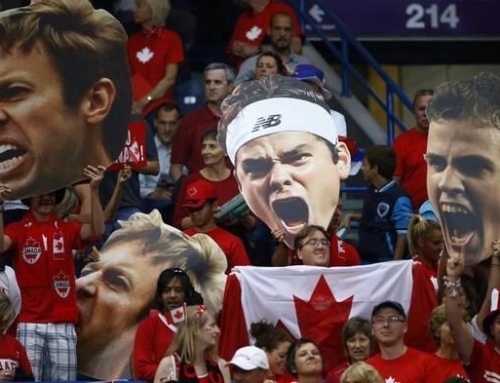
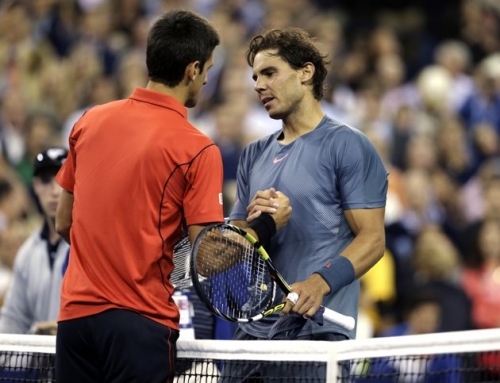
![[US Open Men’s Final] Can Djokovic beat Nadal in the finals?](https://www.essentialtennis.com/wp-content/uploads/2013/09/20130909djokovic-500x383.jpg)
